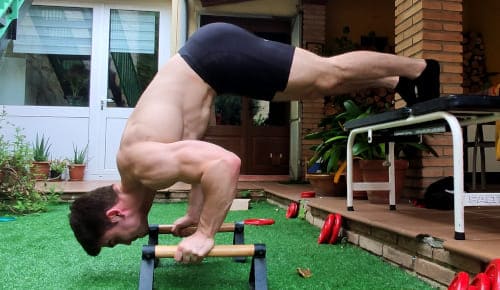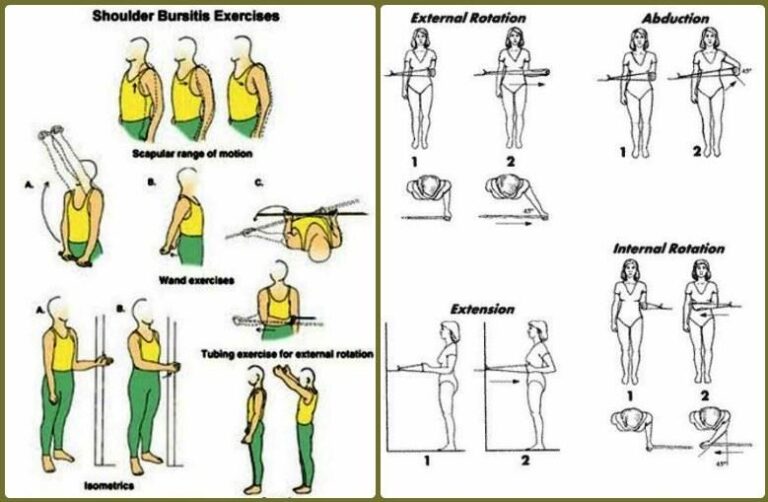14 Best Exercises for Finger Arthritis
What is the Finger Arthritis exercise?
Finger Arthritis exercise is an important exercise that helps to make your daily task easy and also reduce the risk of injury.
If you find everyday chores hard to do because you suffer from stiffness, swelling, or pain in your hands, the proper exercises can help get you back into activity.
Therapists generally suggest specific Finger Arthritis exercises depending on the requirement. Some aid improves a joint’s range of motion or relaxes tight muscles and tendons through stretching.
Other exercises strengthen muscles around a joint to develop more strength or to enhance greater endurance.
It is important to seek the advice of a physical therapist for workout recommendations if your finger condition is painful or incapacitating. Every exercise should be performed slowly and deliberately, to prevent pain and injury.
What is the Finger Arthritis?
Arthritis is a condition that attacks the tissues of finger joints. A joint is where two bones unite. Arthritis can attack the lining of your joint or the cartilage, the smooth surface at the ends of bones.
Ultimately, the cartilage cracks down, and the ends of your bones become uncovered, scratch against each other, and wear away. You have multiple joints in your hand, therefore it’s a common location for arthritis to occur.
Arthritis of the hand induces pain and swelling, stiffness, and deformity. As arthritis progresses, you can’t utilize your hands to operate everyday chores as you earlier could.
Early arthritis in the fingers can induce dull, achy pain, stiffness, swelling, and weakness in the joints. These symptoms tend to grow slowly and worsen over the period. You may detect that the symptoms are worse in the morning.
Cause of the Finger Arthritis
There are many different causes of finger arthritis, but the most common is osteoarthritis.
- Osteoarthritis: Osteoarthritis is a type of arthritis that happens when the cartilage in the joints breaks down over time. This can occur due to age, injury, or overuse.
Other causes of finger arthritis include:
- Rheumatoid arthritis: Rheumatoid arthritis is an autoimmune disease that induces inflammation in the joints.
- Gout: Gout is a type of arthritis that is generated by a buildup of uric acid crystals in the joints.
- Psoriatic arthritis: Psoriatic arthritis is a type of arthritis that involves people with psoriasis, a skin disease.
- Infectious arthritis: Infectious arthritis is a type of arthritis that is induced by an infection.
- Juvenile arthritis: Juvenile arthritis is a type of arthritis that affects children under the age of 16.
Risk factors for Finger Arthritis
Risk factors for creating finger arthritis include:
- Age: The risk of developing finger arthritis increases with age.
- Gender: Females are more likely than males to develop finger arthritis.
- Family history: If you have a family history of arthritis, you are more likely to develop it yourself.
- Obesity: Obesity puts extra stress on the joints, which can lead to arthritis.
- Previous joint injury: If you have injured a joint in the past, you are more likely to develop arthritis in that joint later in life.
- Occupation: Certain occupations, such as those that involve repetitive hand movements, can increase the risk of developing finger arthritis.
Signs and Symptoms for Finger Arthritis
The signs and symptoms of finger arthritis can vary depending on the type of arthritis you have, but some common symptoms include:
- Pain: This is the most common symptom of arthritis and can range from mild to severe. It may be a dull pain or a sharp, stabbing pain.
- Swelling: The joints in your fingers may become swollen, making them appear larger and puffy.
- Stiffness: It may be difficult to bend or move your fingers, especially in the morning or after periods of inactivity.
- Redness: The skin around your joints may become red and inflamed.
- Warmth: The joints in your fingers may feel warm to the touch.
- Range of motion: You may have a decreased range of motion in your fingers, making it difficult to perform everyday tasks.
- Crepitus: A grinding or clicking sensation in your joints when you move them.
- Bony nodules: Hard lumps that form on the joints of your fingers.
- Deformity: Over time, the joints in your fingers may become deformed, making them look crooked or misshapen.
Site of the Finger Arthritis
The areas of your finger that are attacked by arthritis are:
- The base of your thumb is where your thumb meets the wrist.
- Knuckles.
- The middle joints of fingers.
- The finger’s top joint is closest to the nails.
Treatment for Finger Arthritis
There is no cure for finger arthritis, but there are a number of treatments that can help to manage the symptoms and slow the progression of the disease. These treatments may include:
- Over-the-counter pain relievers: Over-the-counter pain relievers, such as ibuprofen and acetaminophen, can help to reduce pain and inflammation.
- Prescription medications: Prescription medications, such as corticosteroids and disease-modifying antirheumatic drugs (DMARDs), can be used to reduce inflammation and slow the progression of the disease.
- Physical therapy: Physical therapy can help to improve the range of motion and strengthen the muscles around the affected joints.
- Occupational therapy: Occupational therapy can help you learn how to perform everyday activities to minimize stress on the affected joints.
- Surgery: In some cases, surgery may be necessary to repair or replace damaged joints.
Exercises for Finger Arthritis
The following 14 exercises for finger arthritis in the hands and fingers
1. Make a Fist or Hand clench

This is a great exercise for Finger Arthritis, Practice it whenever your hand starts to feel stiff.
- Start by straightening the fingers out.
- Slowly bend the hand into a fist.
- surrounding your thumb across your fingers.
- Hold this position for a couple of moments, then repeat.
- Do around 10 reps once and 3 times per day. Individuals can do so more regularly if the exercise is relaxing and pain-free.
2. Finger bends/Finger spreading Exercise
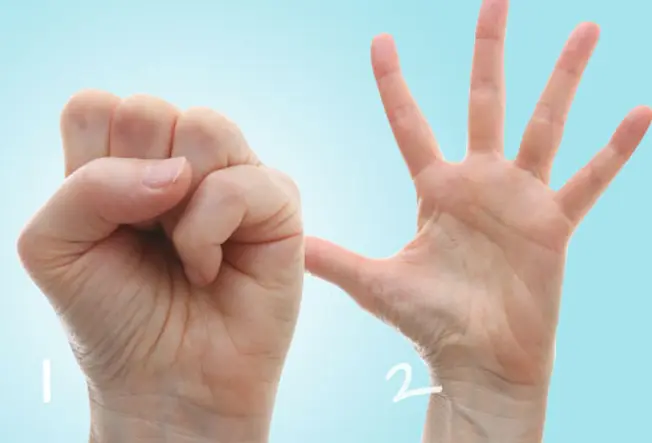
- Begin in the same position as in the last exercise, Start by straightening the fingers out.
- Bend your thumb down toward your palm. Hold it for a couple of moments, then straighten it.
- Bend your index finger down toward your palm. Keep it for a couple of moments, then straighten it.
- Repeat with the remaining fingers on your left hand, one at a moment.
- Repeat the full sequence on your right hand.
3. Thumb Bending/Thumb Flexion
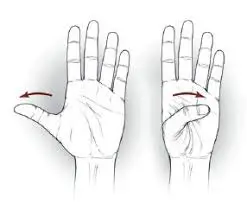
- First, keep your left hand out, with all of your fingers straight.
- Flex your thumb inward toward your palm.
- Stretch toward the base of your little finger with your thumb. If you can’t contact your little finger, don’t worry. Just extend your thumb as distant as you can.
- Maintain the position for 1 or 2 seconds, then return your thumb to the starting place.
- Repeat 10 times.
- Do the exercise with your right hand.
4. Make an ‘O’
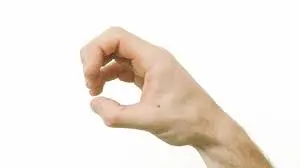
Perform this exercise many times each day on each hand. When your hands are achy or tight, try this stretch.
- Begin with your left hand out & fingers straight.
- Bow all of your fingers inward until they touch. Your fingers should create the figure of an “O.”
- Keep this position for a few moments. Then, extend your fingers again.
- Repeat on the other hand.
5. Table bend/Side-to-side wrist Bend
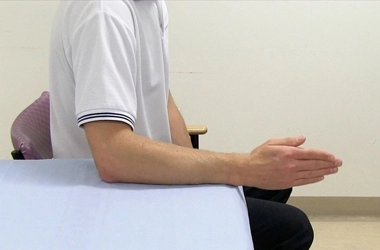
- Put the pinky-side border of your left hand on a tableland, with your hand extended out and your thumb pointed up.
- Keeping your thumb in the same position, curve the other four fingers inward until your hand creates an “L” shape.
- Keep it for a couple of moments, then extend your fingers to move them back into the starting position.
- Repeat 10 times.
- Perform the exact ordering on your right hand.
6. Finger lift
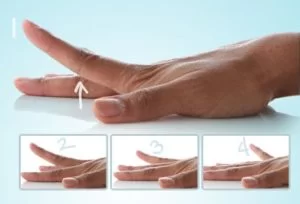
- Position your left hand horizontally on a table, palm down.
- Beginning with your thumb, lift each finger gradually off the table one at a time.
- Keep each finger for 1 or 2 seconds, then lower it.
- perform the whole ordering with the right hand.
7. Wrist Stretch

Don’t forget about your wrists, which might become uncomfortable and stiff as a result of finger arthritis.
- Hold your right arm out with the palm facing down to perform exercise on your wrist.
- With your left hand, gradually push down on the right hand until you sense a stretch in your wrist and arm.
- Keep the situation for a few moments.
- Repeat 10 times.
- Then, perform the whole ordering with the left hand.
8. Thumb Extension
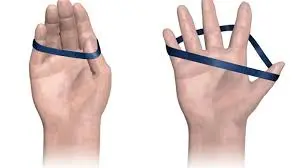
Thumb muscle strengthening can help you grip and move heavy objects like cans and bottles.
- Place your hand facedown on a table. Bind a rubber band around your hand at the bottom of your finger joints.
- gradually drive your thumb out from your fingers as far as you can.
- Maintain for 30 to 60 moments and release.
- Repeat 10 to 15 times with both hands. Do 2 to 3 times a week, but give 48 hours rest in between sessions.
9. Finger Stretch

Try this stretch to assist with pain relief and to enhance the range of motion in your fingers.
- Put your palm-facedown on a table or other flat surface.
- slowly straighten your fingers as flat as you can opposite the surface without pushing your joints.
- Maintain for 30 to 60 seconds and then release.
- Recite at least 4 times with separate hands.
10. Finger and Thumb touch
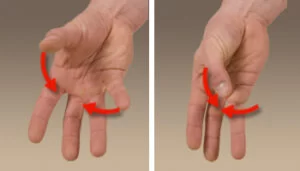
This exercise helps increase the range of motion in your thumbs, which helps with activities like picking up your toothbrush, fork, spoon, and pens when you write.
- Keep your hand out in front of you, with your wrist straight.
- slowly touch your thumb individually to your four fingertips, one at a time, and make the shape of an “O.”
- Hold each stretch for 30 to 60 seconds. Repeat at least 4 times in both hands.
11. Finger walk
- Relax your hand on a flat texture, such as a tabletop, with your palm fronting down. Drive your thumb out from your fingers.
- Begin with your index finger. Drive it up and toward your thumb. Following move your middle, ring, and small fingers one at a moment up and toward your thumb. Repeat this movement 5 times with every hand.
- Do every exercise gradually and smoothly. These movements should not cause pain. If you have discomfort, stop the exercises and rest. When you are prepared, do the activities again but gradually and with a smaller power.
- If the pain persists, speak with your healthcare experienced or physical therapist.
12. Thumb Stretch
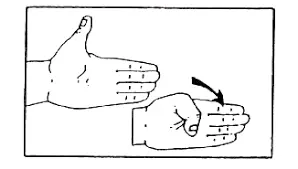
Strengthening the muscles of your thumbs can help you hold and raise heavy things like cans and bottles.
- Hold your hand out, palm facing you. slowly bend the end of your thumb down toward the bottom of your index finger. Maintain for 30 to 60 seconds. Release and repeat four times.
- Hold your hand out, palm facing you. slowly extend your thumb across your palm using just your lower thumb joint. Hold for 30 to 60 seconds. Release and recite four times.
13. Ball exercises
Many exercises work well with a stress ball, softball, or tennis ball. They help improve flexibility and increase strength.
Such exercises include:
Full Grip
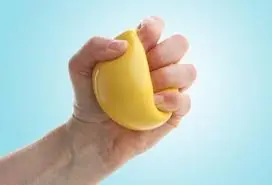
- Perform this exercise a couple of times per week, with periodic days of rest in between.
- Compress a ball in the hand as strongly as possible.
- Release after a few seconds.
- Repeat 10–15 times on each hand.
Palm Press
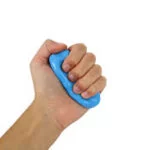
- Put a tension ball between the palms, with the forearms in an upright position.
- Press and maintain for 3–5 seconds, then relax.
- Repeat 10 times.
Finger Grip
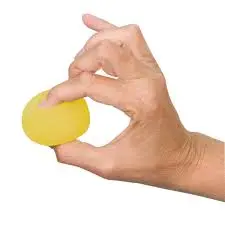
- put a tension ball between the tip of a finger & the thumb
- Press and maintain for 3–5 seconds, then relax.
- Repeat 10 times with every finger, relax for 1 minute, then do the exact same with the other hand.
Roll To and Fro
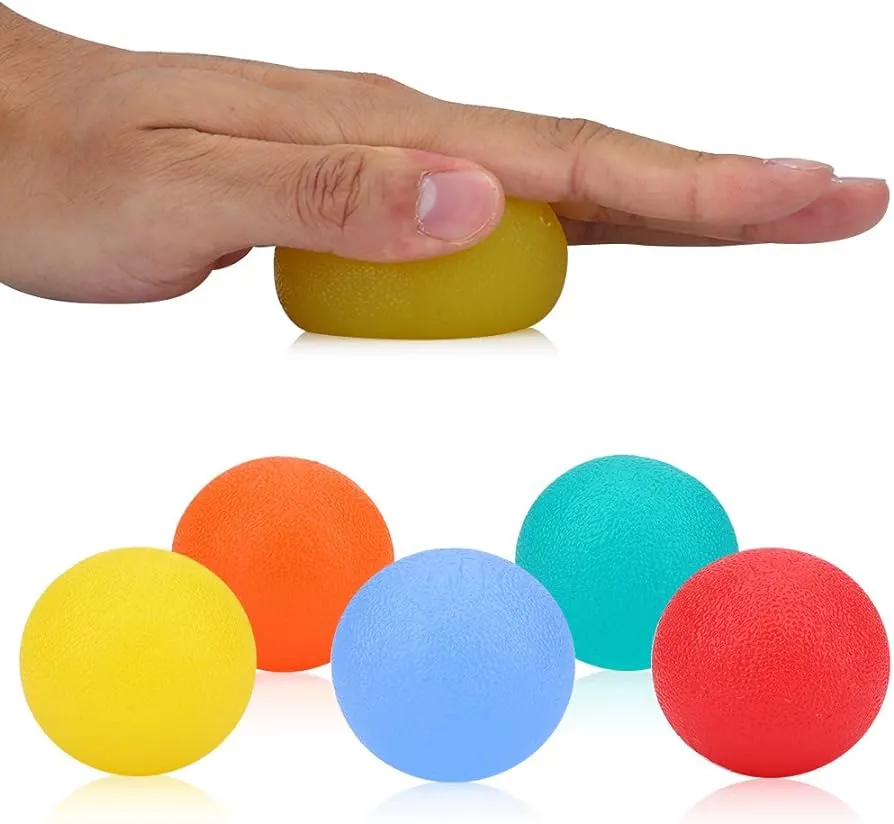
- Roll a tension ball from the palm up to every thumb and finger separately, gradually stretching every digit.
- Move the ball back down to the palm.
- Repeat for a few seconds.
14. Soft hand Massage
Use the opposing thumb to apply short, gentle strokes to the palm to give yourself a relaxing hand massage. Also, massage the fingers starting at the tips, and then pushing down toward the palms.
Always remember to be gentle with each exercise and stop if it becomes painful.
When to see a Doctor
You should see a doctor if you have any of the following signs and symptoms
- Joint pain that is intense or does not enhance with home treatments
- Joint swelling that is red, warm, or tender to the touch
- Joint stiffness that lasts for more than 30 minutes in the morning or after periods of inactivity
- Decreased range of motion in your fingers
- Bony nodules or deformities in your fingers
- Other symptoms of arthritis, such as fatigue, fever, or weight loss
Can Finger Arthritis Prevented?
Finger Arthritis can’t be stopped. Regardless, you can monitor for symptoms of finger arthritis as you age and see your healthcare provider if you detect differences in your joints. You can even take measures to control specific risk factors. Eat nourishing foods to nourish your body and keep a healthy weight. Living overweight (a body mass index, or BMI, more than 25) puts more pressure on your joints. To Calculate BMI (body mass index) Click Here.
Quite smoke, Smoking improves your danger of finger arthritis.
How to Prevent Arthritis in the Fingers?
It is possible for a person to decrease their risk of developing finger arthritis in the hands and fingers by
- Taking supervision of the hands & fingers after sustaining any damages
- Exercising the hands regularly
- Not smoking
FAQs
What is Finger arthritis?
Finger arthritis is a condition that causes inflammation and pain in the joints of the fingers. It can be caused by a variety of factors, including Osteoarthritis, Rheumatoid arthritis, Psoriatic arthritis, and Gout.
What is the important of Finger Arthritis Exercise?
Finger Arthritis exercise is an important exercise that helps to make your daily task easy and also reduce the risk of injury.
What is the best arthritic finger exercise?
Begin by keeping your hand straight and your fingers close together. Curve your fingers gently, as if you were wrapping your hand around a can or bottle. Return your hand to the starting position softly and smoothly. Experiment with each hand five times.
What are the early symptoms of arthritis in the fingers?
The hands and fingers are in pain.
Swelling of the hand and wrist joints.
Your joints and hands are stiff.
You have a weakness in your hands.
Does massaging your fingers help with arthritis?
A hand massage has several advantages for patients with arthritis, including reduced pain and anxiety. regular hand massage, on the other hand, has been demonstrated to enhance strength and lessen discomfort, anxiety, and sadness in persons with arthritis in their hands and fingers.
References
- Professional, C. C. M. (n.d.-a). Arthritis of the hand. Cleveland Clinic. https://my.clevelandclinic.org/health/diseases/7082-arthritis-of-the-wrist-and-hand
- Cpt, S. C. (2023, October 16). What does arthritis in the fingers feel like? https://www.medicalnewstoday.com/articles/arthritis-in-fingers
- Watson, S. (2023, February 3). 11 hand exercises to ease osteoarthritis pain. Healthline. https://www.healthline.com/health/osteoarthritis/arthritis-hand-exercises
- Hand exercises for people with arthritis. (2023, June 24). Mayo Clinic. https://www.mayoclinic.org/diseases-conditions/arthritis/in-depth/arthritis/art-20546847
- Bell, A. (2020, July 30). 8 hand exercises for arthritis with pictures. https://www.medicalnewstoday.com/articles/8-hand-exercises-for-arthritis


